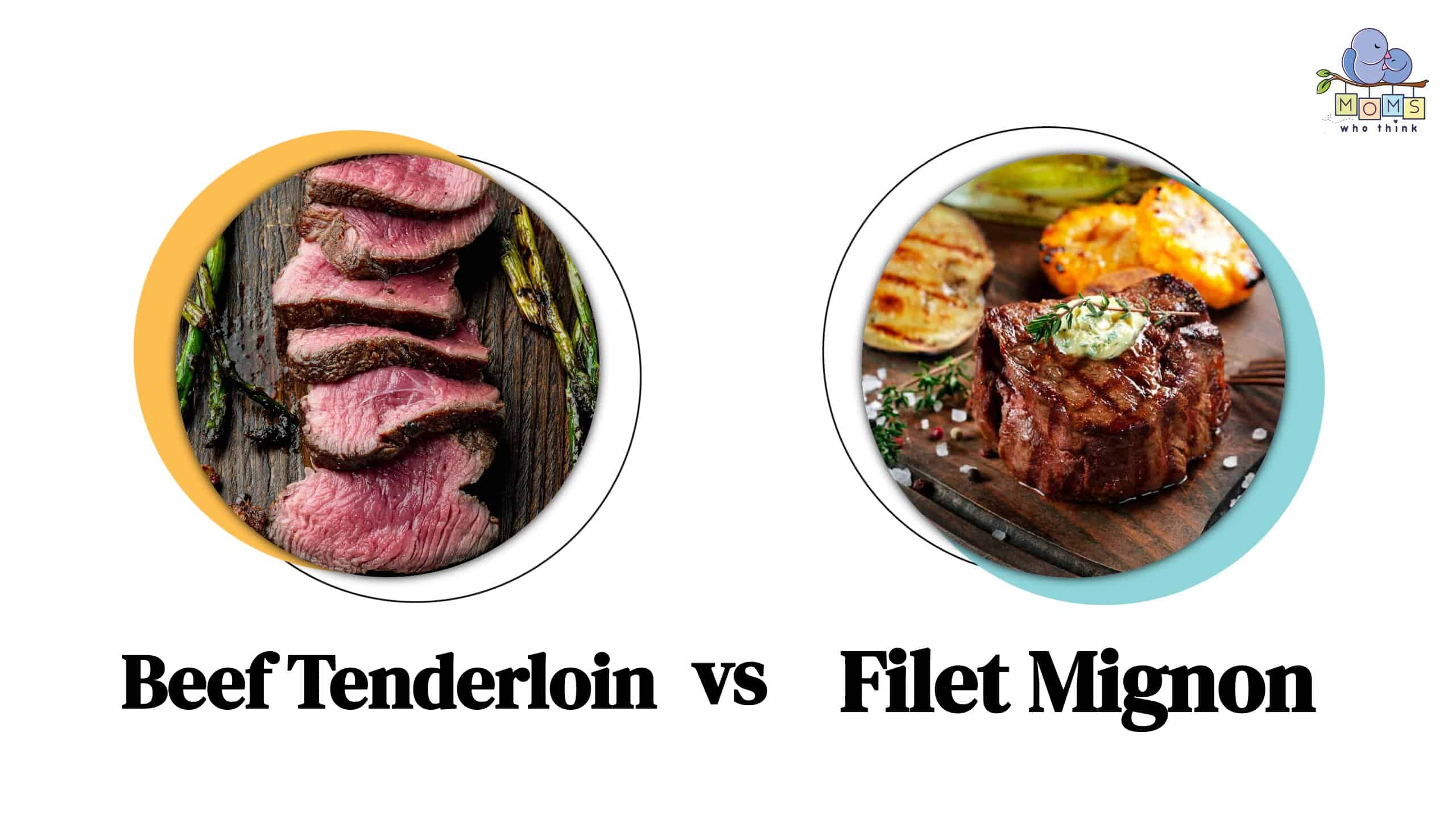If you enjoy a delicious cut of meat, chances are you have heard of filet mignon and beef tenderloin. Some may think, but aren't these cuts of beef the same thing? In the meat world, this is a common misconception; however, although they are cut from the same place, beef tenderloin and filet and beef tenderloin are, in fact, different. How? There are a couple of differences that we will discuss in this post.
You may be asking, but wait, isn't filet mignon actually beef tenderloin? The short answer is yes; filet mignon is technically beef tenderloin because it comes from the tenderloin. Therefore many people see them as the same thing, but filet mignon is, in fact, different in a couple of other ways.
- The must-have convenient reference guide for every home cook!
- Includes more than 8,000 substitutions for ingredients, cookware, and techniques.
- Save time and money on by avoiding trips to grab that "missing" ingredient you don't really need.
Filet Mignon Vs. Beef Tenderloin: What Is the Difference?
The most important difference separating filet mignon vs. beef tenderloin is that filet mignon refers to a specific cut of steak whereas beef tenderloin refers to an entire muscle. Filets are the tapered ends of the beef tenderloin, while the tenderloin itself is divided into cuts like the filet mignon, chateaubriand, and tournedos.
While filet mignon is a premium cut often served in fine dining establishments, the remaining tenderloin can be used to create other delicious steaks or a succulent tenderloin roast perfect for family gatherings. Let's dive into the differences in more detail below!
Filet and Beef Tenderloin Nutrition vs. Other Cuts of Steak
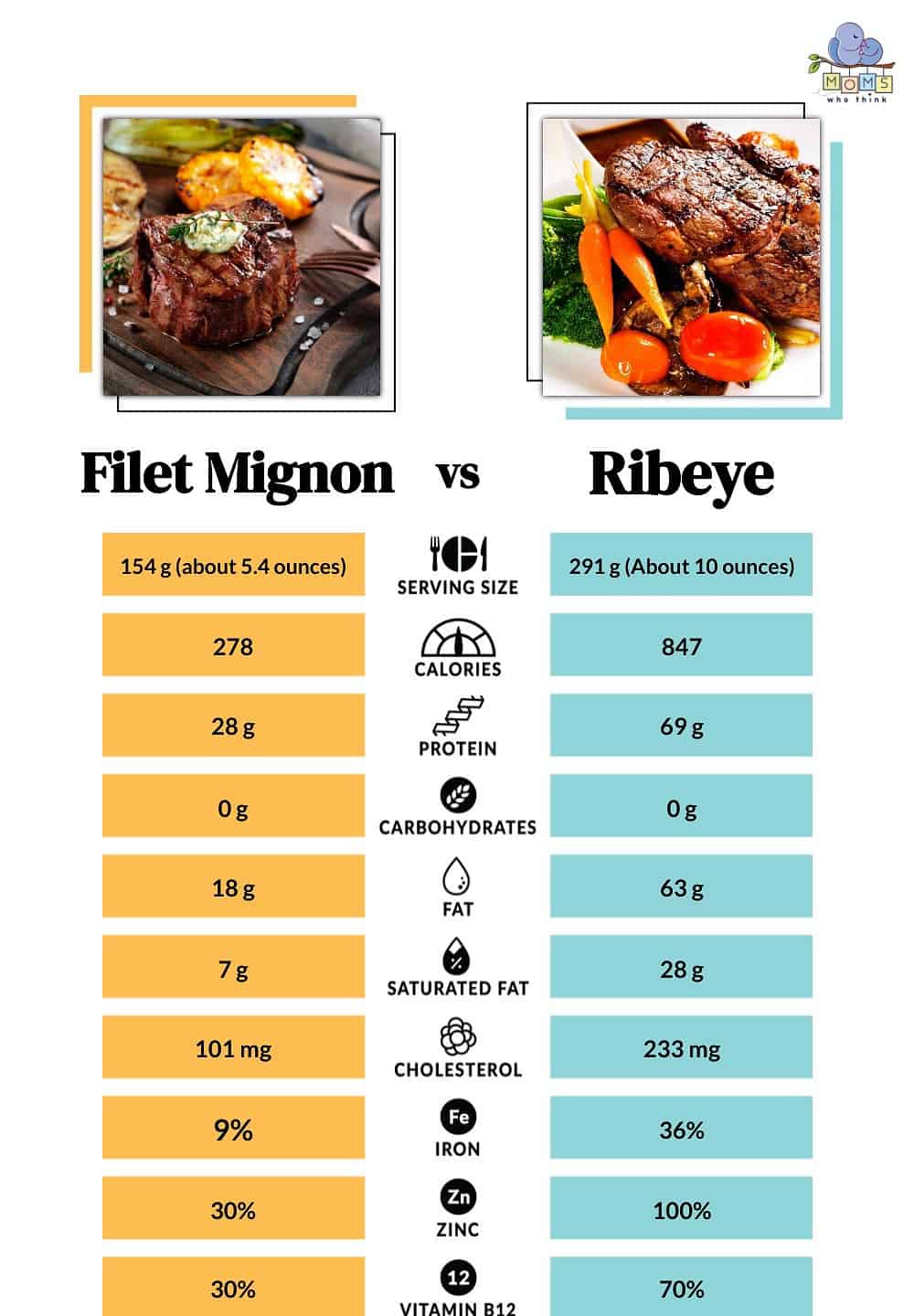
©/Shutterstock.com
Above is a comparison of how filet mignon compares to another popular cut of steak, the ribeye. As you can see, the filet (and other beef tenderloin cuts) have fewer calories per ounce and lower overall fat content. Typically, filet serving sizes are also smaller at restaurants compared to other cuts like ribeyes or even New York strips.
What Is Beef Tenderloin?
The beef tenderloin comes from the back half of the animal. This location is along the spine, the elliptical muscle, Psoas Major.
Kidney fat covers this muscle, making it one of the animal's most tender and juicy cuts of steak. In addition, the kidney fat surrounding the tenderloin gives this cut a flavor-packed with juiciness and tenderness.
Beef tenderloin is perfect in Beef Wellington or as a roast. However, another way to use beef tenderloin is to cut it into filet mignon.
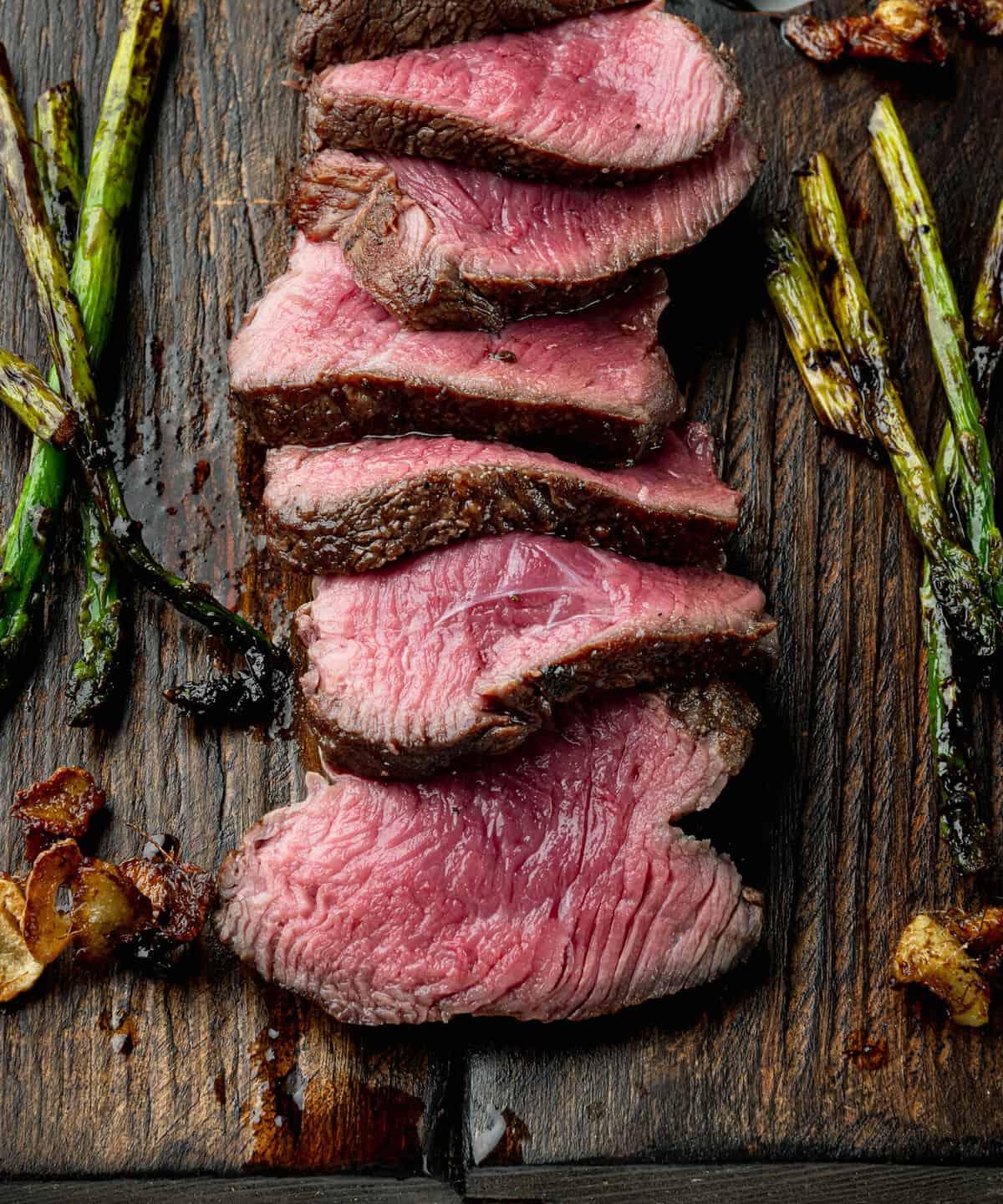
©Chatham172/Shutterstock.com
What Is Filet Mignon?
Fillet mignon is part of the tenderloin. It is cut from the very tip, which is the most delicate area of the loin. As a result, it is very lean and has hardly any connective tissue. The lack of connective tissue produces a succulent, tender steak cut that almost melts in your mouth.
Filet mignon is cut into small slabs of steak two and a half inches thick. These steaks are perfect for luxury dinners and go perfectly with herb potatoes or roasted vegetables. Sometimes filet mignon is also referred to as a tenderloin steak or tenderloin filet.
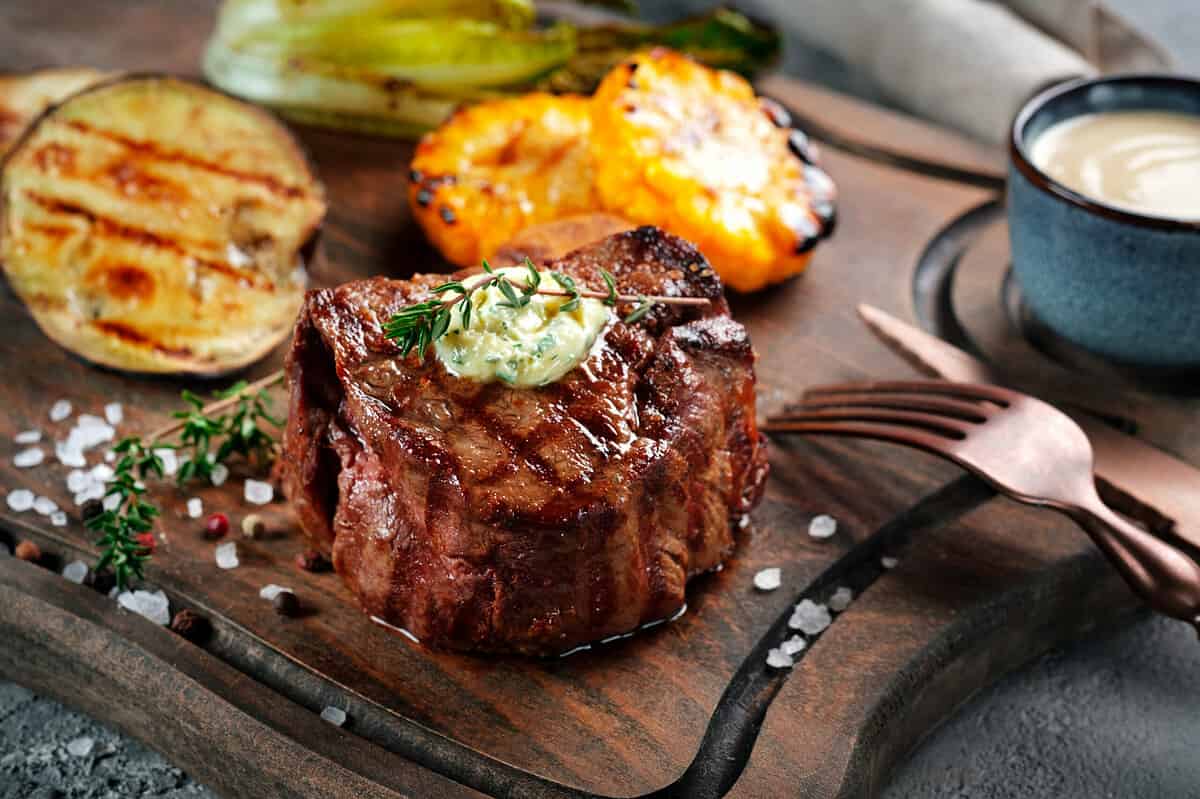
©Andrei Iakhniuk/Shutterstock.com
What Is Marbling?
In the meat world, steak lovers always look for steaks covered in fat. Have you ever wondered why this is so important? Doesn't all steak cook the same? No, each steak cut can provide you with a delicious, juicy flavor, or it may be susceptible to overcooking. Overcooking produces a dry and chewy taste. That is why looking at the marbling on the steaks can be helpful when deciding which cut of meat to choose from the supermarket. Marbling is important because it shows each cut's intermuscular fat. The more intramuscular fat, the better. Here are a few reasons why:
- Intramuscular fat is considered saturated and healthy.
- The more marbling on a steak, the juicier it is.
- When a steak has more marbling, you will not need to worry about it drying out while cooking as much because of the juice it provides.
However, marbling is not the end-all when it comes to steak. Beef tenderloin and filet mignon both have little marbling, yet they produce a tenderness that is hard to beat. While marbling can hint at how juicy a steak will be, tenderness is another story.
- The must-have convenient reference guide for every home cook!
- Includes more than 8,000 substitutions for ingredients, cookware, and techniques.
- Save time and money on by avoiding trips to grab that "missing" ingredient you don't really need.
What Are the Main Differences Between Beef Tenderloin and Filet Mignon?
Since filet mignon and beef tenderloin are cut from the same part of the animal, what are the main differences? The main difference lies in the size of these cuts of meat and the varying cooking methods.
How Is Beef Tenderloin Cooked?
Beef tenderloin is a large cut of meat that cooks in several ways. First, many people enjoy slowly roasting it. This is because slow roasting the tenderloin traps the flavor and deliciousness inside of the meat. Cooking on high heat on a grill is another favorite way to prepare beef tenderloin. Finally, many people love to put it in a marinade, adding to the flavor of the beef. It is important to remember that although beef tenderloin is one of the most tender cuts of meat on the animal, it can still be overcooked. So it is essential to take great care and cook beef tenderloin at the right temperature and time to enjoy the tenderness this beef offers.
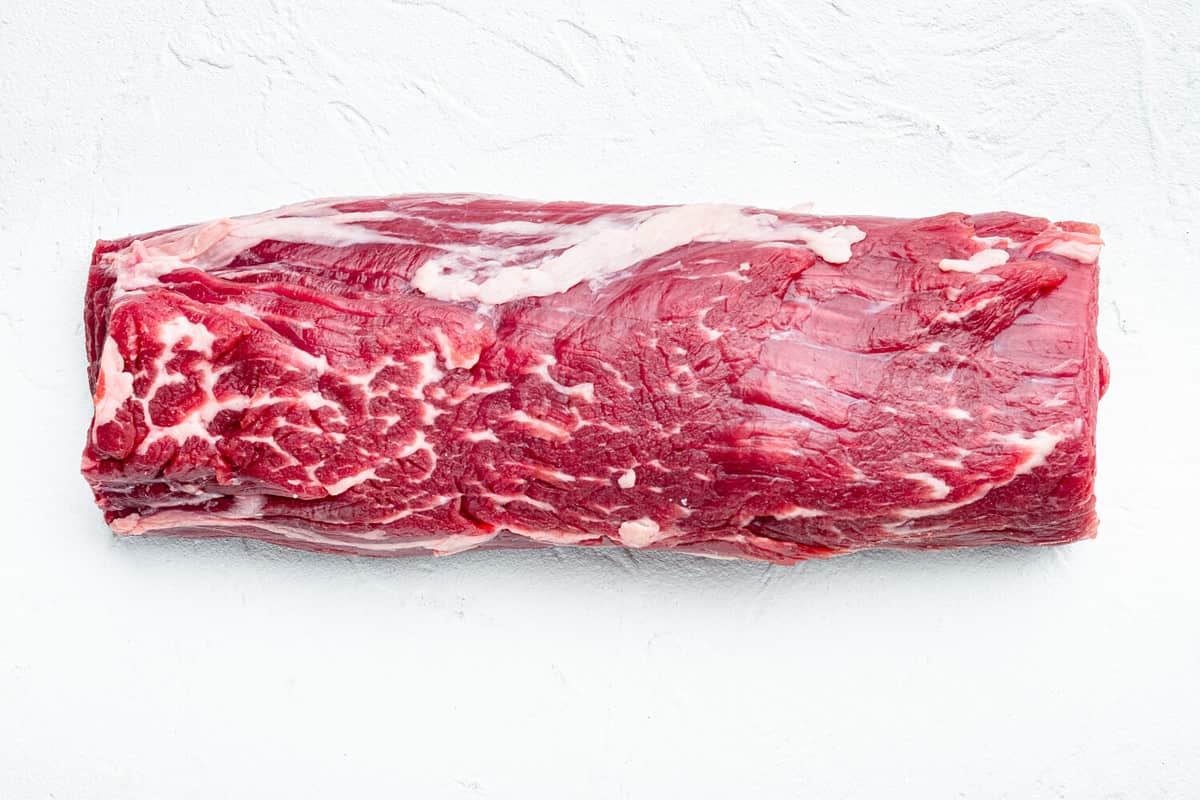
©Chatham172/Shutterstock.com
How to Cook Filet Mignon
Filet mignon is cut from the tip of the beef tenderloin. But when you go to the store, it is possible to buy pre-portioned filets. These steaks are perfect for grilling. Another way they are enjoyed is by pan-frying quickly on high heat and then sticking them in the oven to produce a juicy steak. It is even possible to air fry filet mignon.
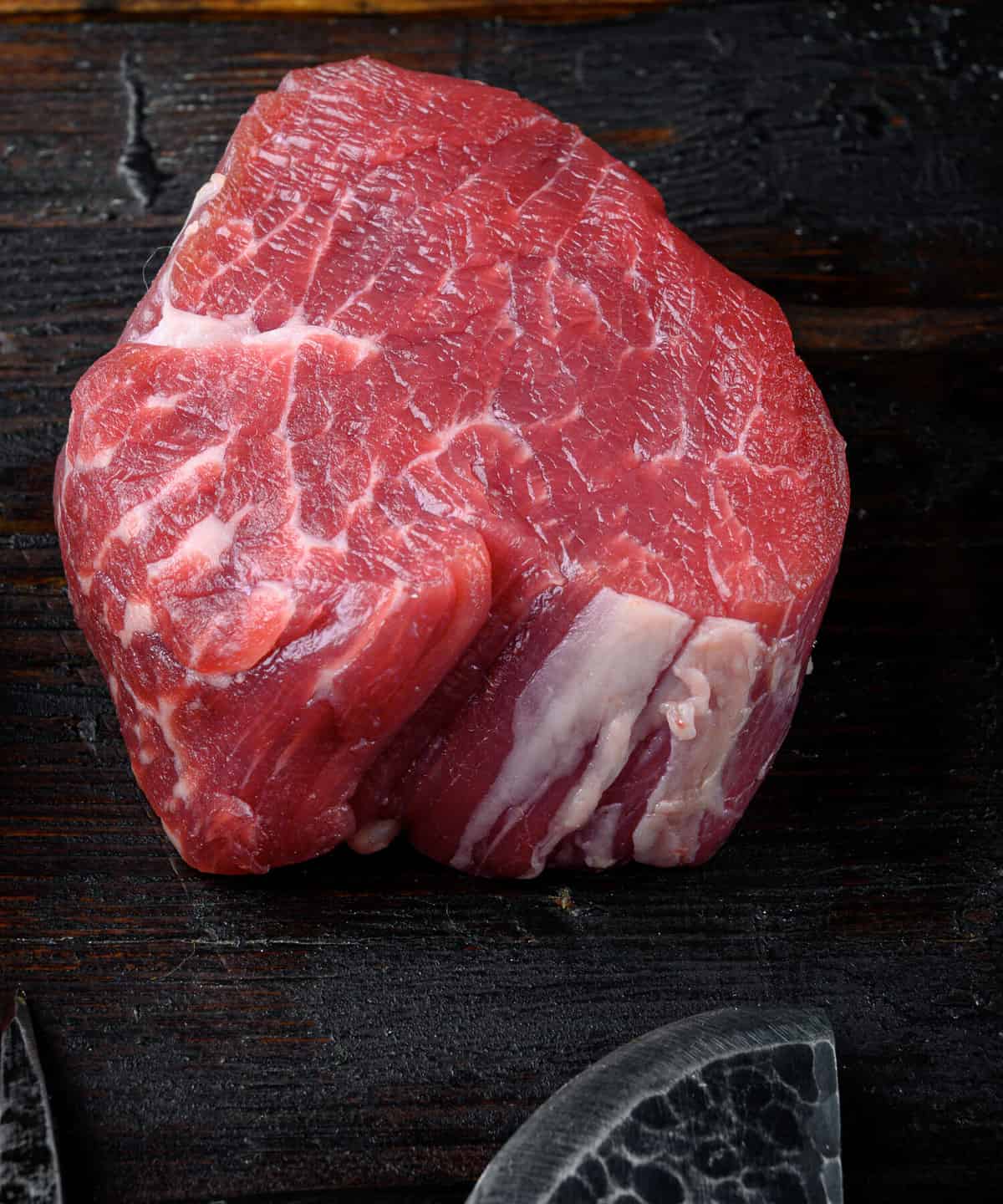
©Chatham172/Shutterstock.com
Do Filet Mignon and Beef Tenderloin Have Tenderness Differences?
Both filet mignon and beef tenderloin are loved for their juicy and beefy flavor that is savory. Beef tenderloin and filet mignon come from the same part of the animal, meaning they have similar tenderness. However, this cut has less connective tissue along the spine, meaning the beef tenderloin is lean and tender. The filet mignon is cut from the tenderloin at the very tip. Fun fact, the filet mignon comes from the most tender part of the beef tenderloin. They're both delectable pieces of meat that are a fantastic addition to your dinner.
Appearance and Characteristic Differences
There are a couple of differences in appearance and characteristics. The filet mignon is cut into two and a half inches giving a small cut of beef perfect for one individual. It is best when cooked to medium doneness or less so that the flavor stays inside the steak without drying out. Beef tenderloin is excellent as a roast or a cut of meat that makes a perfect meal for more people. Both beef tenderloin and filet mignon are juicy because this meat is high in fat.
Should You Choose Beef Tenderloin or Filet Mignon?
Next, comes the question should you choose filet mignon or beef tenderloin? Both beef tenderloin and filet mignon are more expensive because they are high quality and very tender. Therefore, they are in higher demand. However, it boils down to your personal preference. You cannot go wrong with either one of these cuts of meat because they're both succulent and tender and go terrific with several different sides. If you want to make a meal for one or two people, filet mignon provides just the right amount of meat and can be perfect for an elegant dinner. On the other hand, a beef tenderloin is excellent for roasting and can serve more people, like a family or large gathering.
One Final Note
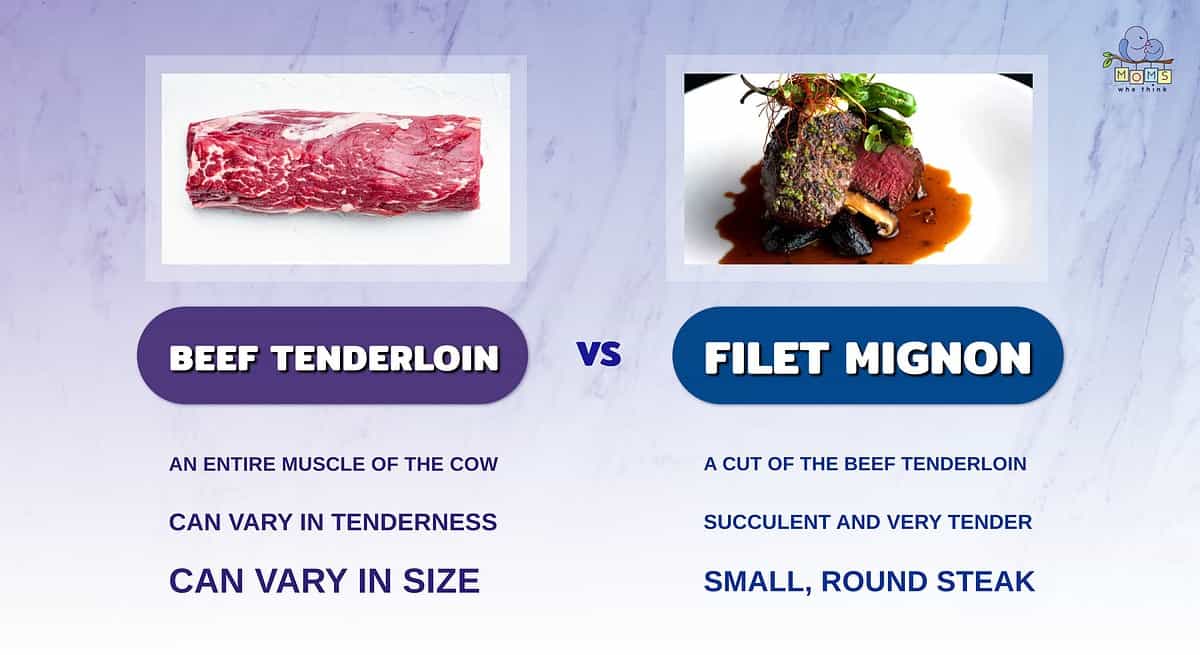
- A beef tenderloin is not necessarily a specific cut of meat, but rather an entire muscle of the cow. The beef tenderloin is cut into smaller steaks or used as a roast. A filet mignon is a specific cut of meat.
- Beef tenderloin can vary in tenderness, depending on what part of the meat you're eating and how it's cooked. Generally, though, it is quite tender. Filet mignon is extremely succulent and tender.
- Filet mignon is a small cut of meat, while beef tenderloin can vary in size depending on how it's cut and prepared.
If you are looking for the juiciest, most tender cut of beef, beef tenderloin and filet mignon are excellent options. They have high quality and high-fat content, which produces a tenderness that melts in your mouth. So which one will it be, beef tenderloin versus filet mignon? You can't go wrong with either one!
Beef Tenderloin Recipes
- Rosemary Beef Tenderloin with Chocolate Sauce and Roasted Cauliflower Recipe
- Spinach Pork Tenderloin Recipe
- Mama's Hearty Beef Stew Recipe
Filet Mignon Recipe & Posts
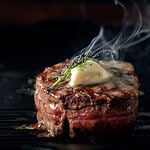
Bacon Wrapped Steak
Ingredients
12 large garlic cloves, peeled
1/4 cup olive oil
3 Tablespoons unsalted butter, cut into small chunks
Kosher salt
3 1/2 teaspoons chopped chives
1/2 teaspoon coarsely ground black pepper
1/2 teaspoon dried thyme leaves
4 (6- to 7-ounce) filet steaks, about 1 inch thick
4 very thin slices of lean bacon
6-inch wooden skewers or toothpicks, soaked in water 10 minutes and patted dry
Instructions
1. Preheat oven to 400 degrees F. Place peeled garlic and olive oil in 1-cup, ovenproof ramekin, soufflé dish or custard cup. Cover dish tightly with aluminum foil and place in oven.
2. Roast on center rack until garlic is golden and very tender and soft when pierced with knife, about 30 minutes (start checking cloves after 20 minutes and then every 5 minutes until done).
3. With slotted spoon, remove garlic from bowl and reserve oil. Place garlic, 1 1/2 teaspoons of the reserved oil, butter and 1/8 teaspoon salt in food processor or blender and process, pulsing machine on and off for 30 seconds or less until garlic is coarsely chopped and blended with butter and oil.
4. Transfer garlic butter to small bowl and stir in 2 teaspoons of the chives. The garlic butter can be prepared 1 day ahead. Cover with plastic wrap and refrigerate. Bring to room temperature 30 minutes before ready to use.
5. When ready to cook steaks, oil a grill rack and prepare grill. In small bowl, stir together 1 teaspoon kosher salt, coarsely ground black pepper, and thyme. Rub both sides of each filet with some of this seasoning.
6. Wrap each steak around its sides with 1 slice of bacon. Skewer bacon in place with wooden skewer or with 2 to 3 toothpicks.
7. Grill steaks until lightly charred on the outside and until bacon is cooked, about 5 minutes per side for medium-rare. When done, remove steaks from fire and place on warm serving plate. Remove toothpicks.
8. Top each steak with 1 generous pat of roasted garlic butter and sprinkle with some of remaining chives. When the butter starts to melt, season the steaks. Serve immediately.
